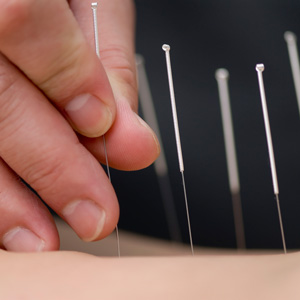What is Dry Needling?
Dry Needling involves the insertion of a thin filament needle to stimulate the healing process of soft tissues (muscle “trigger points”, fascia, tendons and ligaments, etc.). The result of dry needling is pain relief and restoration of healthy physiology.
What is a “trigger point”?
 A “trigger point” is a hyperirritable point in a muscle that is associated with a hypersensitive palpable nodule, or “knot.” This area becomes painful at the site and can also “radiate” in predictable patterns.
A “trigger point” is a hyperirritable point in a muscle that is associated with a hypersensitive palpable nodule, or “knot.” This area becomes painful at the site and can also “radiate” in predictable patterns.
Does it hurt?
A healthy muscle feels very little discomfort with insertion of this needle. However if the muscle is sensitive and shortened or has active trigger points within it, the subject will feel a sensation like a muscle cramp (the “twitch” response).
What is the difference between Dry Needling and Acupuncture?
The objectives and philosophy behind the use of dry needling by physical therapists is not based on ancient theories or tenets of traditional Chinese medicine. The performance of modern dry needling by physical therapists is based on Western Neuroanatomy and modern scientific study of the musculoskeletal and nervous systems.
Both Dry Needling and Acupuncture do, however, use the same tool; a solid needle filament.
Who can benefit from Dry Needling?
Almost anyone experiencing a variety of pain problems including, but not limited to:
- Acute/Chronic injuries
- Headaches
- Neck/Back pain
- Tendinitis
- Muscle Spasms
- “Sciatica”
- Hip/Knee pain
- Muscle strains
- Fibromyalgia
- “Tennis/Golfer’s Elbow”
- PFPS
- Overuse injuries
Are there any side effects to Dry Needling?
Side effects may vary among individuals. Typically, only mild muscle soreness or skin bruising.
Is Dry Needling covered by my health insurance?
In most cases it is a fee or cash-based service.
Request an Appointment
Make an appointment with us today to see if dry needling is a therapy that might help you.

 REQUEST APPOINTMENT
REQUEST APPOINTMENT Office Hours
Office Hours Email Us
Email Us

